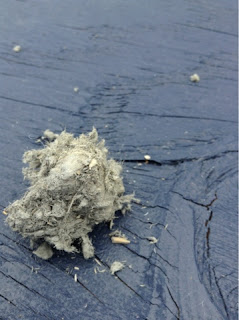Alternative Solution to Paper Mill Sludge Waste
Mrs. Lee’s 5th Period Chemistry
Introduction:
For this lab, we were assigned to determine the properties of the Local Paper Mill’s waste by-product, known as sludge. The Newberg Paper Mill produces a byproduct waste called Sludge. The sludge is composed of Cellulose, Calcium Carbonate, Silicon and Aluminum. Using my knowledge in chemistry I must come up with a cost effective, realistic, reliable, and useful way to discard or repurpose this waste. The solution I proposed was to repurpose this waste by putting the waste into bedding for Animals
Background Information:
To do this we will need to know a few of the characteristics and makeup of the Sludge.
- SPN Sludge:
Makeup: Percentage-%
Cellulose 50-80%
Calcium Carbonate 8-12%
Silicon 2-10%
Aluminum <1-10%
Properties of Substance:
Color: Grey
Texture: Soft, Fluffy
Buoyancy: Sinks in Fresh, and Saltwater
Flammability: Substance burns, but does not produce much of a flame.
The Sludge made as a byproduct of Thermomechanical and Mechanical Pulping.
The sludge is made when the process of making paper comes to an end. The Newberg Paper Mill Produces Newsprint which uses methods of papermaking known as Mechanical Pulping and Thermomechanical Pulping. The sludge is produced as the by-product in this process. Grindstones lined with silicon carbide or Aluminum oxide are used in combination with hot water to tear the wood apart to make the pulp. Many different components such as refiner plates, and wooden logs instead of chips can be substituted in these two processes, but in the end the same product and byproduct is yielded.
My Work:
In my attempts to find an alternative purpose for the sludge I used both qualitative and quantitative concepts. The reason my studies used both observations and precise numbers was because both tests required both concepts to be carried out to retrieve the most accurate answer. The first test I was able to carry out, the second I was not. For the second test, it requires a simulation of impact, and requires resources I do not have access to
In the first test, I tested combustion of the Sludge. The substance before it was caught on fire weighed 22.6 grams, and after it weighed 9.72 grams. Effectively burning off 12.88 grams of sludge. This is the quantitative part of the testing,
the Combustion that takes place (NOT A REACTION) leaves approx. 40-50% ash left over.
Si + Al + CaCO3 +C6H10O5 ---> CO2 + H2O + Si +Al + CaCO3
When the Sludge is placed under a flame the only thing that is burned off is the cellulose, leaving the remainder of Carbon Dioxide, Water, Silicon, Aluminum and Calcium Carbonate. This is the qualitative part of the test.
This concludes that although the byproduct caught on fire, it was not flammable enough to cause an immediate danger to the surroundings.
THE SLUDGE IS HEAT RETARDANT
|
On the left: A photo of the Sludge On the Right: A photo of The Bunsen Burner used to burn Sludge
For my second test, I was testing the flammability of the Sludge Waste compared to the most commonly used animal beddings - Hay. Hay is most commonly used in bedding for animals, in places such as Barns. Hay when used in bedding is always dry, and thus very flammable. Hay is a grass, and is composed of Water and Carbon, as is every living thing.
Below is a video of HAY Combusting
At approximately 4:00 you can see the HAY on fire. Confirming that HAY is flammable.
THE HAY IS VERY FLAMMABLE
|
A Photo of hay, on fire.
Conclusion:
From my work I have concluded that the byproduct from Newberg Paper Mill called Sludge, would be a very good replacement for hay in barn animal bedding. Although it may be more expensive for farmers to buy, It has the potential to prevent many summer barn fires. One limitation I ran into was not having access to testing on different materials and stuffings that are also used in beds. Another limitation I ran into was my access to resources. With the correct resources a few more variables could have been tested. One of them being the resiliency and life expectancy of not only the Sludge, but other leading foams and bed stuffing. To do this, I would start by finding the density of both the sludge and Foam. Cushions and beddings quality of foams are determinedly density, the higher the density, the better quality of bedding you have. Finding this would also prove the cost effect to be worth it. Although hay is most commonly used in Animal bedding, othere materials are sometimes used as well. Another test I could have performed was testing the flammability of the other foams and stuffings. By testing all these I could solidy my original results.
This would allow me to ensure the bedding to be the number one choice for farmers and other companies alike. Thus ensuring the Paper Mill an alternative way to dispose of their waste.
Sources:
www.wikipedia.com
www.youtube.com




No comments:
Post a Comment